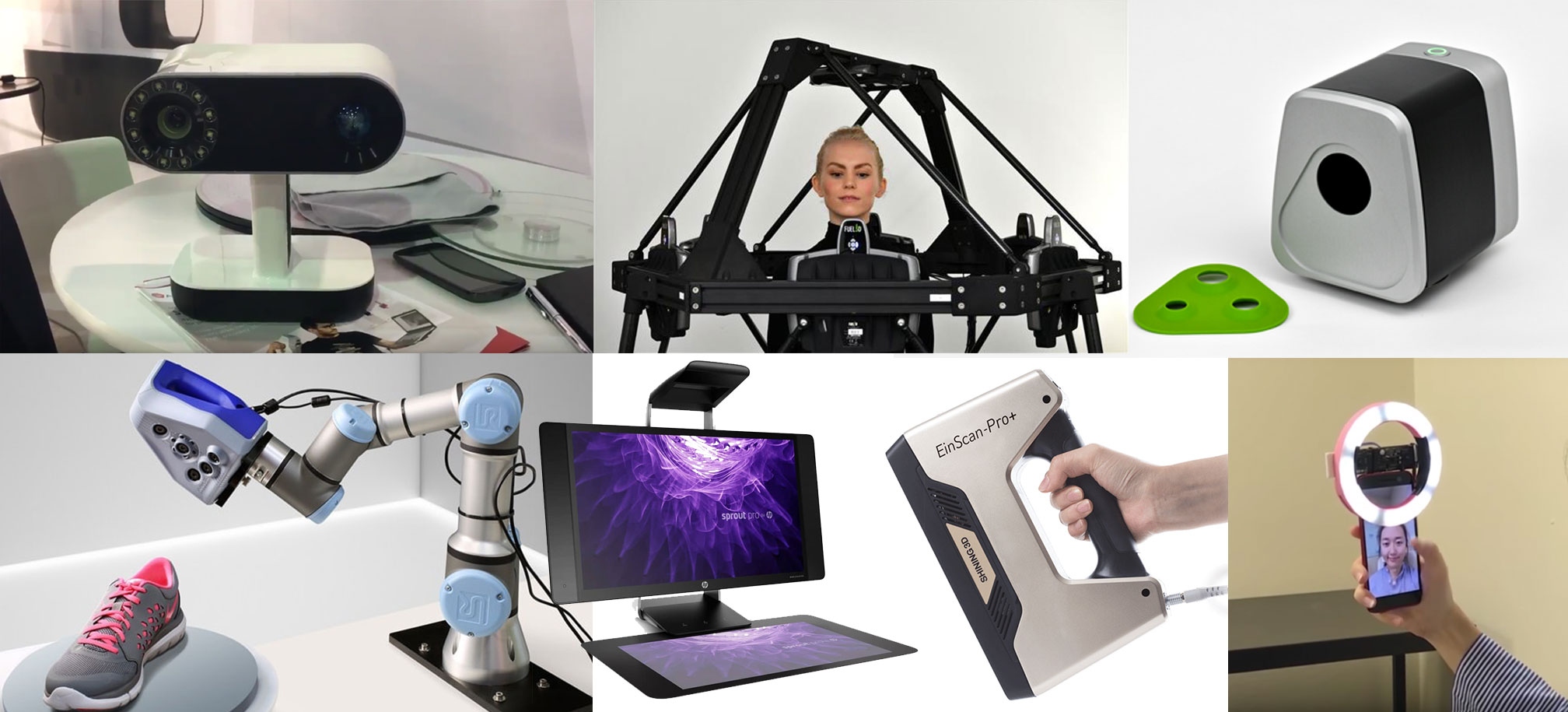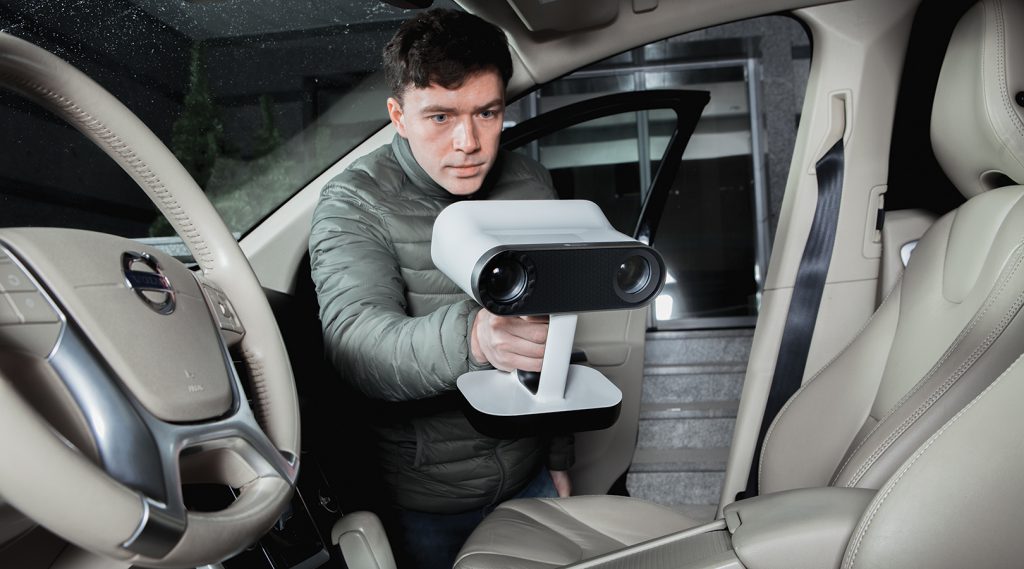This year’s Consumer Electronics Show ended yesterday. For your convenience, I’ve compiled a list with all 3D Scanning-related announcements.
Two new 3D Scanners from Fuel3D
In 2016 I reviewd the Fuel3D Scanify — a 3D scanner that can make a 3D capture of a face in 0.3 seconds. It works very well and the amount of geometric detail is impressive. The downside, however, is that making 360° 3D scans requires making separate scans from different sides and semi-automatically stitching them together in the software. This is already a lot of work for objects, but it’s nearly impossible for faces because of facial movements between shots.
To solve this, Fuel3D introduced a contraption that holds 7 Scanify scanners — 6 around the subject and one facing down — to capture a full 360 instantly. The Scanify itself relies on Photogrammetry algorithms to capture depth, so this setup can be compared to 3D capture rigs that contain multiple DSLR cameras.
Fuel3D is also releasing an SDK that will allow VFX and game studios to incorporate the scanner into their production pipeline. There’s no information on pricing but it makes sense that it will cost more that the total price of 7 Scanify scanners, which are $1500 each. More information can be found here.
Fuel3D also introduced a High Resolution Desktop Scanner that’s aimed at scanning small human features like ears and even fingerprints with 0.045mm accuracy in just 0.14 seconds.
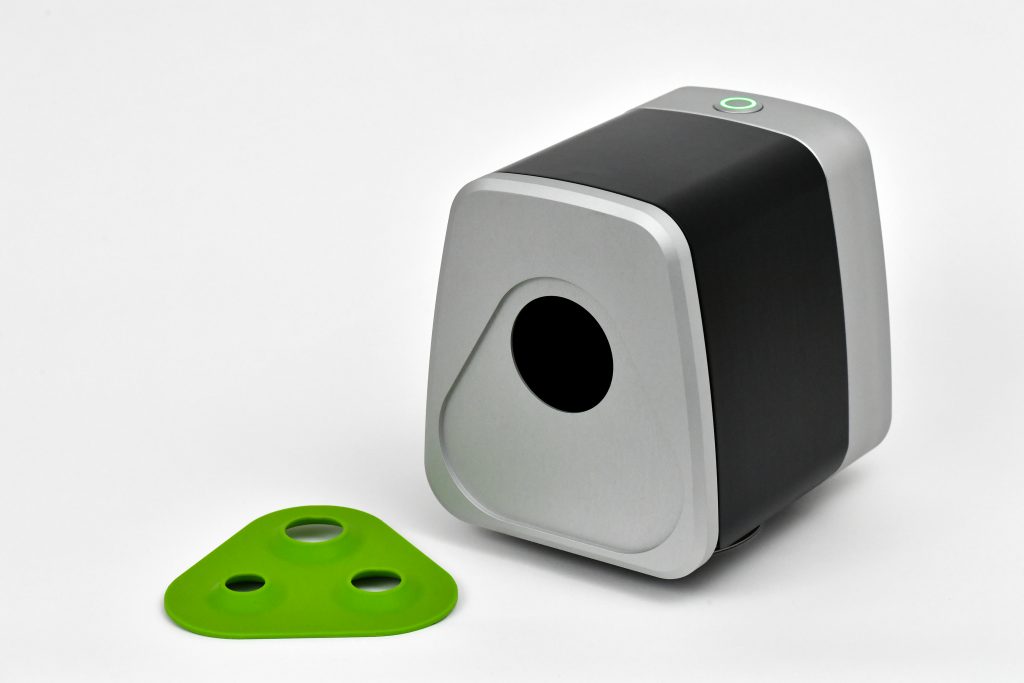
The green face plate is removable and contains 3 lenses with different focal lengths that can be rotated in front of the camera. Fuel3D targets the scanner towards biometric scanning purposes such as security, skin-analysis in medical settings and also the development of small wearables like earphones. More info can be found here.
Artec RoboticScan and Leo 3D Scanner with build-in Screen
I’m currently finishing my review of the Artec Eva and will be testing their Space Spider model soon. They’re actually handheld scanners and they work perfectly well combined with a manual turntable for scanning objects. But if you need to scan many objects, there’s always room to automate repeating tasks. This is why Artec introduced the RobotiScan, which is a Space Spider operated by a UR3 robotic arm and an automatic turntable. The setup can operate autonomously and determine the best trajectory around each object. You can see the arm in action in the second part of the video below the next paragraph. More info can be found here.
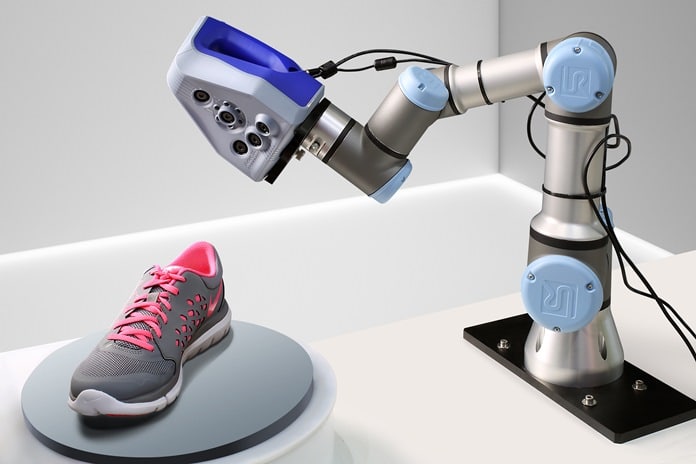
While I can’t find any details about it, according to the video by TCT Magazine below, Artec also unveiled a new handheld 3D scanner with a build-in screen and processing hardware. This means this is probably a stand-alone device. I’m very curious about that, because that would offer a lot more freedom than walking around with an Eva scanner in one hand and a tablet or laptop in the other. I’ve reached out to Artec for more details about this device.
Update January 23rd: After some digging, I did find a lot of details about this upcoming scanner online. It’s called the Leo and is an improvement on the Eva in almost every possible way. I’ve dissected the specs — including price and possible release date — in a separate post!
And here’s the CES video:
New #3Dscanning products from @Artec3DScanners at #CES2017 – more updates in our live blog https://t.co/Oll2It8gWX pic.twitter.com/sSbqIqr1y0
— TCT Magazine (@TheTCTMagazine) January 5, 2017
HP Sprout Pro G2
When I reviewed the original Sprout Pro by HP, I was impressed by how the user experience possibilities of the combination of the down-facing projector and touch mat. I was less enthusiastic about the Sprout’s 3D scanning capabilities. While the structured light scanning technology allowed very high-resolution geometry and textures, the otherwise great-looking software had a hard time fusing separate scans together into a single 360° model — and it didn’t allow any manual help by the user.
At CES 2017 HP announced the second generation Sprout Pro, aptly named the G2. It looks like this:
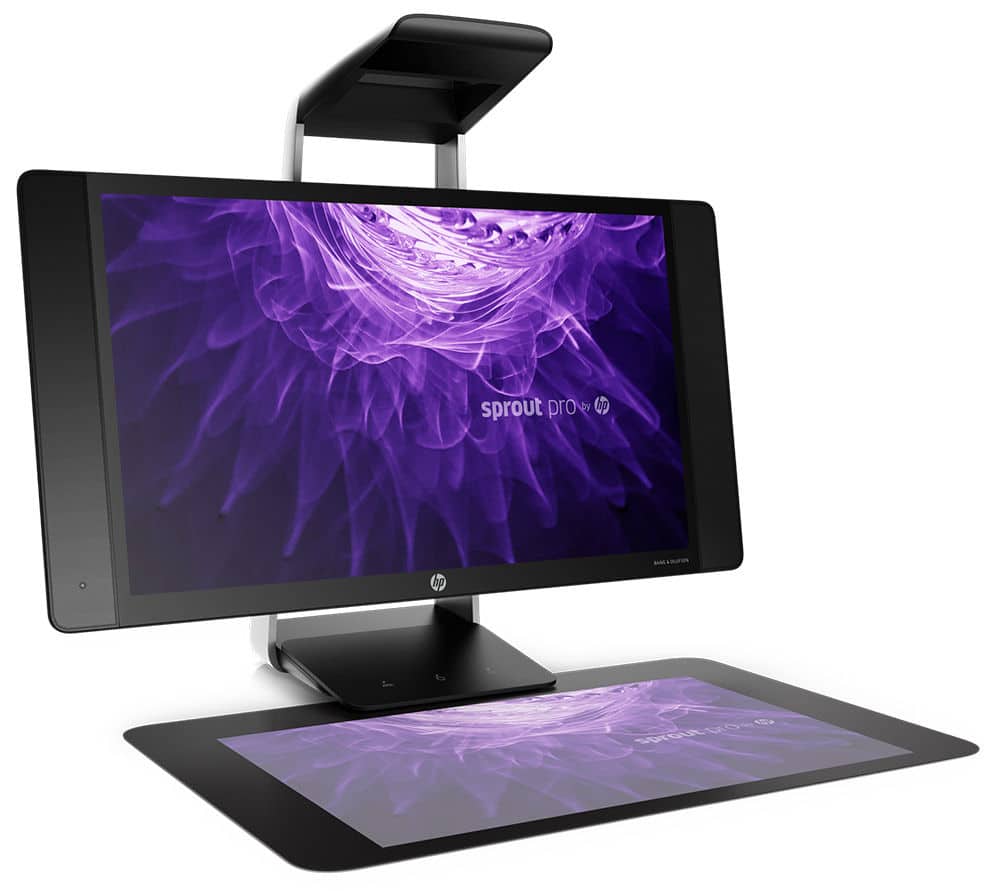
The all-in-one computer had both an aesthetic and hardware update but as you might expect I’m most interested in the updates to the 3D scanning capabilities of the Sprout Pro G2. The good news here is that many of the updates have come from HP’s acquisition of professional 3D Scanner manufacturer DAVID. This results in better software that’s also compatible with the DAVID SLS-3 professional 3D Scanner.
The internal 3D capture hardware has also been upgraded. In my review of the original Sprout, I discovered that the included Intel RealSense 3D camera wasn’t used at all for 3D scanning so it’s no surprise that this depth sensor didn’t make a return. Instead, the Sprout Pro G2 features a real-time depth sensor developed by HP and Orbbec, a company that specializes in this kind of hardware.
I’ve written a separate article about the Sprout Pro G2 with more details and a video of the new real-time object scanning mode in action. You can check it out here.
Shining3D EinScan-Pro+
When I Reviewed the EinScan-Pro a few months ago it was brand new. So I’m surprised that Shining3D is already introducing a new model named the EinScan-Pro+ which will complement the other rather than replace it.
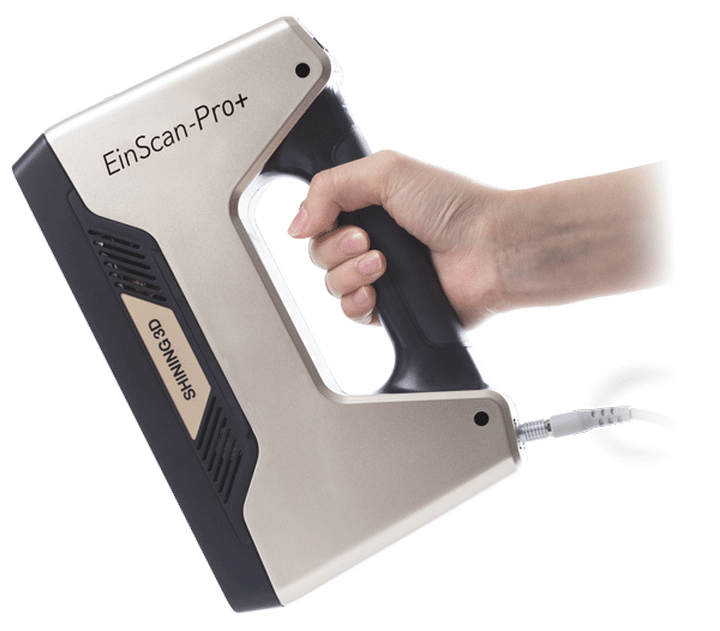
The “plus” has a an increased scan range that’s 1.6x bigger than the original which would greatly improve the scanning time for large objects. This is great news, because in my tests it took an uncomfortably long time to do a full body scan for both the subject and the operator.
On top of that the also-new 2.0 version of the EinScan software has new R² (Rapid Registration) scanning module which would further improve scanning in Rapid handheld mode. This is, however an optional, paid-for software module.
In my original review found the Rapid mode mentioned above the only usable handheld mode. Tests of the HD mode proved that it could capture more geometric detail, but I found it too slow to realistically work with. This has been fixed with the EinScan-Pro+ which is a completely new HD mode which uses 100 scan lines instead of just 7 on the original EinScan-Pro. According to Shining 3D, this makes the mode 3 times faster which is an enormous improvement.
More info about the EinScan-Pro+ can be found here.
Bellus3D high-resolution 3D selfie camera
While the brands above are all well-known, I hadn’t hear of Bellus3D before CES2017. But they’ve developed a very interesting 3D scanner that can be used on mobile devices. It uses infrared light in combination with two IR-cameras to record depth and one to record color. On top op that, it can also use the phones native front-facing camera to capture high-res textures.
While most IR depth sensors required an external light setup to capture good textures, Bellus3D’s device comes with a LED light ring that ensures uniform lighting. And on top of the 3D captures with a claimed accuracy of 0.4mm, the device can also use the captured photos to add extra geometric details like wrinkles and pores to the 3D geometry. If you put the Sketchfab embed below in MatCap render mode, you can see this results in a very detailed 3D mesh. More info can be found here.
Two 3D Scanners from ESUN
ESUN introduced a new structured light desktop 3D scanner which differs from most competitors because it includes two instead of one scanning module. This allows for simultaneous scanning of small objects from two height-angles, reducing the overall scan time. More info can be found here.
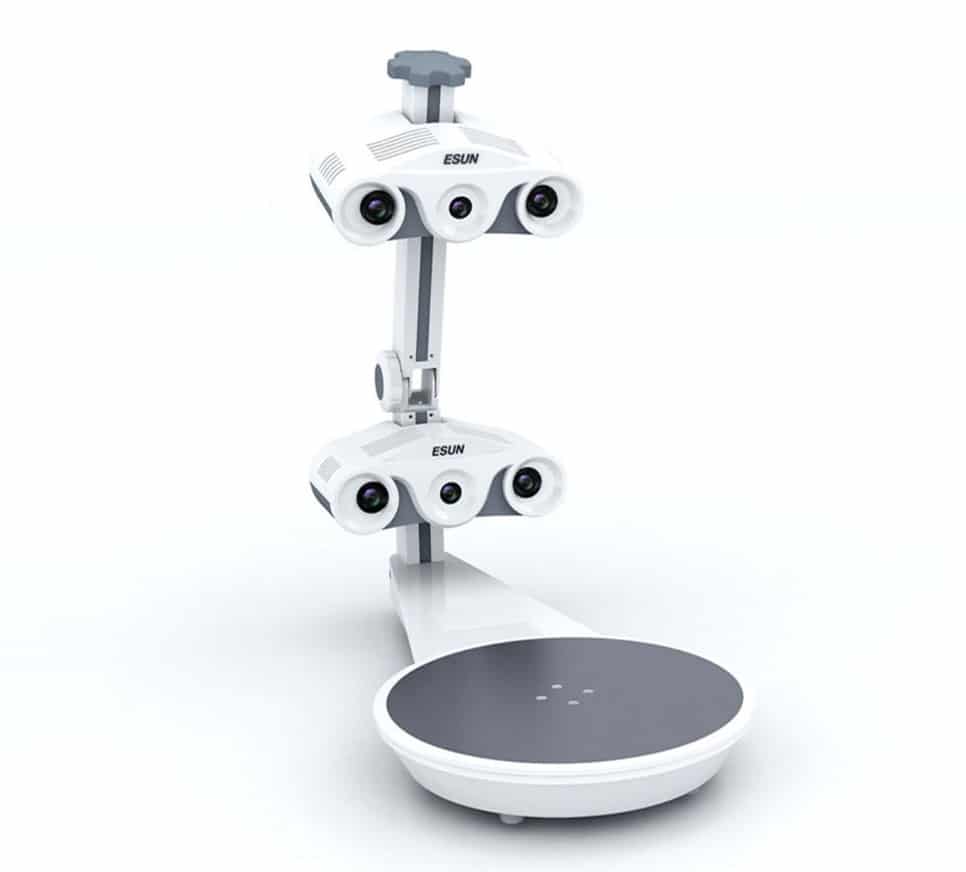
ESUN also reveiled a Face Scanner and a Clothes Scanner that apparently use a patented 2-DSLR Photogrammetry technique to capture high resolution 3D models. More about those scanners can be found here.
[Update] ASUS ZenFone AR
I originally missed this one, because it’s not a 3D scanning announcement at first sight. This is because Google Tango phones are mainly marketed towards Augmented Reality applications. However, the infrared depth sensor is capable of 3D scanning as well. A while ago I covered the first Tango-enabled smartphone — the Lenovo Phab2 Pro – in combination with a Tango 3D scanning app by Matterport.
At CES2017 the Tango focus was on the second Tango handset — the ASUS ZenFone AR.
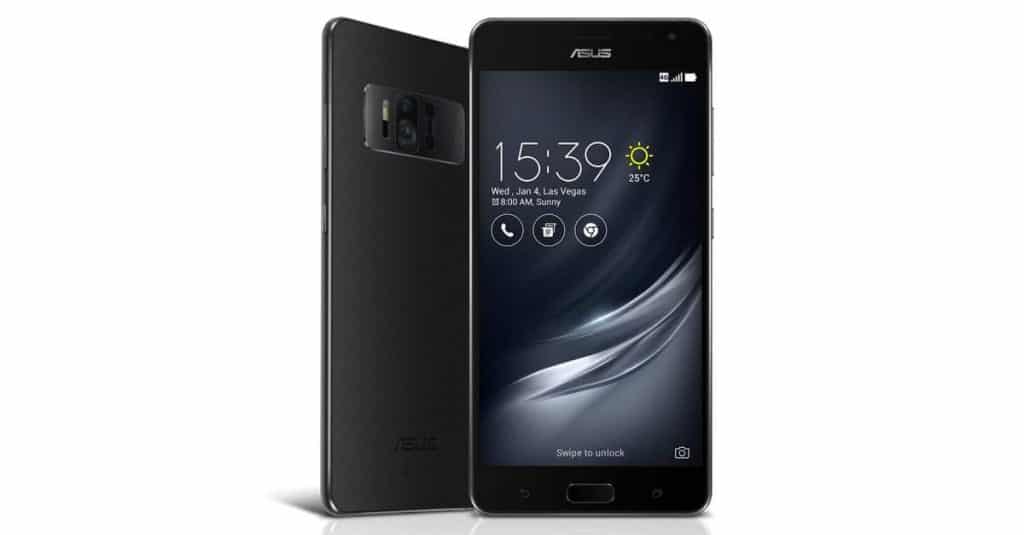
Shortly after the announcement Scandy — a company that’s developing the upcoming Scandy Pro 3D Scanner for Android — published a video that shows how that their Scandy Core SDK can be used to quickly create 3D scanning apps for Tango using JavaScript and works perfectly on the new ASUS handset.
This is another example of the fact that Tango is perfectly capable of 3D scanning.
I think that covers all 3D scanning news from CES 2017. If I missed something that worth mentioning, please let me know!
